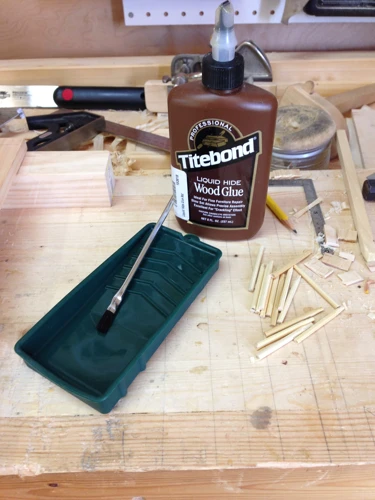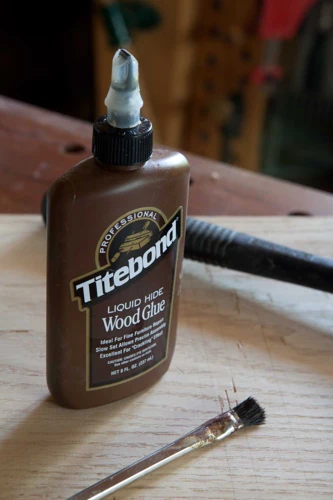Within the realm of adhesives, there exists a variety that has withstood the test of time, proving indispensable in various crafts and restoration practices. This substance is known as hide glue, derived from the enduring strength of animal by-products.
What Is Hide Glue?
Hide glue is an adhesive that has been utilized for centuries in woodworking and restoration. It is a natural product made from the collagen within animal skins and connective tissues. Renowned for its strong bond and reversible properties, hide glue remains a favored choice among craftsmen and conservators alike.
History of Glue
The story of adhesives is as old as civilization itself, with ancient glue playing a pivotal role in the creation of tools and artifacts. The history of glue reveals its use in furniture, art, and even the construction of Egyptian pharaohs’ tombs, signifying its importance in human development and cultural heritage.
The Composition and Production of Hide Glue
The process of creating hide glue is both an art and a science. This natural adhesive is remarkable for its simple yet effective composition.
How Is Hide Glue Made?
How is hide glue made, one might wonder. The answer lies in a meticulous process of cleaning, soaking, and heating animal hides and bones to extract the collagen. This collagen is then dried into granules or sheets and can be rehydrated to form the glue.
Animal Hide Glue: The Ingredients
At its core, animal hide glue consists of pure collagen, water, and sometimes additives to modify its characteristics. Yet, it is the quality of the collagen that determines the strength and flexibility of the adhesive.
Hide Glue vs Wood Glue
When comparing adhesives, it’s essential to understand the distinctive qualities of each. Hide glue and wood glue are two popular contenders, often debated among woodworkers.
Comparing Properties and Applications
Hide glue vs wood glue is a common comparison. While modern wood glue, typically a synthetic PVA (polyvinyl acetate), offers convenience and a long open time, hide glue boasts unique properties such as thermal reversibility and a stronger bond with wood fibers.
Advantages of Hide Glue Over Wood Glue
One significant advantage of hide glue over wood glue is its ability to be dissolved and reapplied, facilitating easy repairs and adjustments. This feature, along with its natural composition, makes hide glue particularly favored in antique restoration and fine woodworking.
Types of Hide Glue
There are various forms of hide glue, each suited to specific tasks and preferences.
Hot Hide Glue
Hot hide glue is the traditional format, requiring heating to become fluid. This type is prized for its quick grab time and the strength of its bond, which can be crucial in detailed woodworking tasks.
Liquid Hide Glue
Liquid hide glue, on the other hand, is ready to use straight from the bottle. It offers convenience and a longer working time, making it suitable for hobbyists and less time-sensitive applications.
Practical Applications of Hide Glue
The versatility of hide glue is showcased through its myriad of applications across different disciplines.
Hide Glue Uses in Woodworking
- Furniture assembly and repair
- Veneering
- Instrument making
Restoration and Conservation with Hide Glue
Professionals in restoration value hide glue for its reversibility and compatibility with historical materials, which is essential in preserving the integrity of antiques and artworks.
Working with Hot Hide Glue
Utilizing hot hide glue requires an understanding of its properties and the proper techniques for its application.
Preparing Hot Hide Glue
Preparation involves soaking the granules and then heating them in a glue pot or double boiler to achieve the right consistency for use.
Application and Cure Time
When applying hot hide glue, swift work is necessary as it gels quickly. The substrate must be clamped until the glue cools and solidifies, forming a robust bond.
Hide Glue Cure Time Explained
The hide glue cure time can vary, typically taking between 24 to 48 hours to fully set. Factors such as humidity and temperature can influence this duration.
DIY Hide Glue Preparation
For those interested in traditional methods, knowing how to make hide glue at home can be a rewarding endeavor.
How to Make Hide Glue at Home
One can create a homemade batch of hide glue by simmering clean scraps of hide or connective tissue until the collagen is extracted. The resulting liquid is then concentrated and dried for future use.
The Legacy of Ancient Glue
Exploring the roots of hide glue offers insight into its enduring legacy.
Ancient Glue in Historical Context
Ancient glue is not merely an old adhesive; it is a symbol of innovation and sustainability. Its use in historical artifacts and structures attests to its fundamental role in past societies.
If you’re curious about the different types of adhesives and their uses, you may be particularly interested in learning about hide glue, which is a form of adhesive derived from animal collagen. For a broader understanding of adhesives, check out our comprehensive article on what is glue. To explore a specific type of product, our write-up on glue traps can provide you with detailed information. And for those interested in modern adhesive solutions, our explanation of PL glue, a strong polyurethane adhesive, is a must-read to grasp its unique properties and applications.
Conclusion: The Enduring Significance of Hide Glue
In a world where synthetic adhesives dominate, the traditional hide glue holds a special place. Its natural origin, strength, and reversibility continue to make it a valuable resource in preservation and woodworking, echoing the ingenuity of our ancestors.




